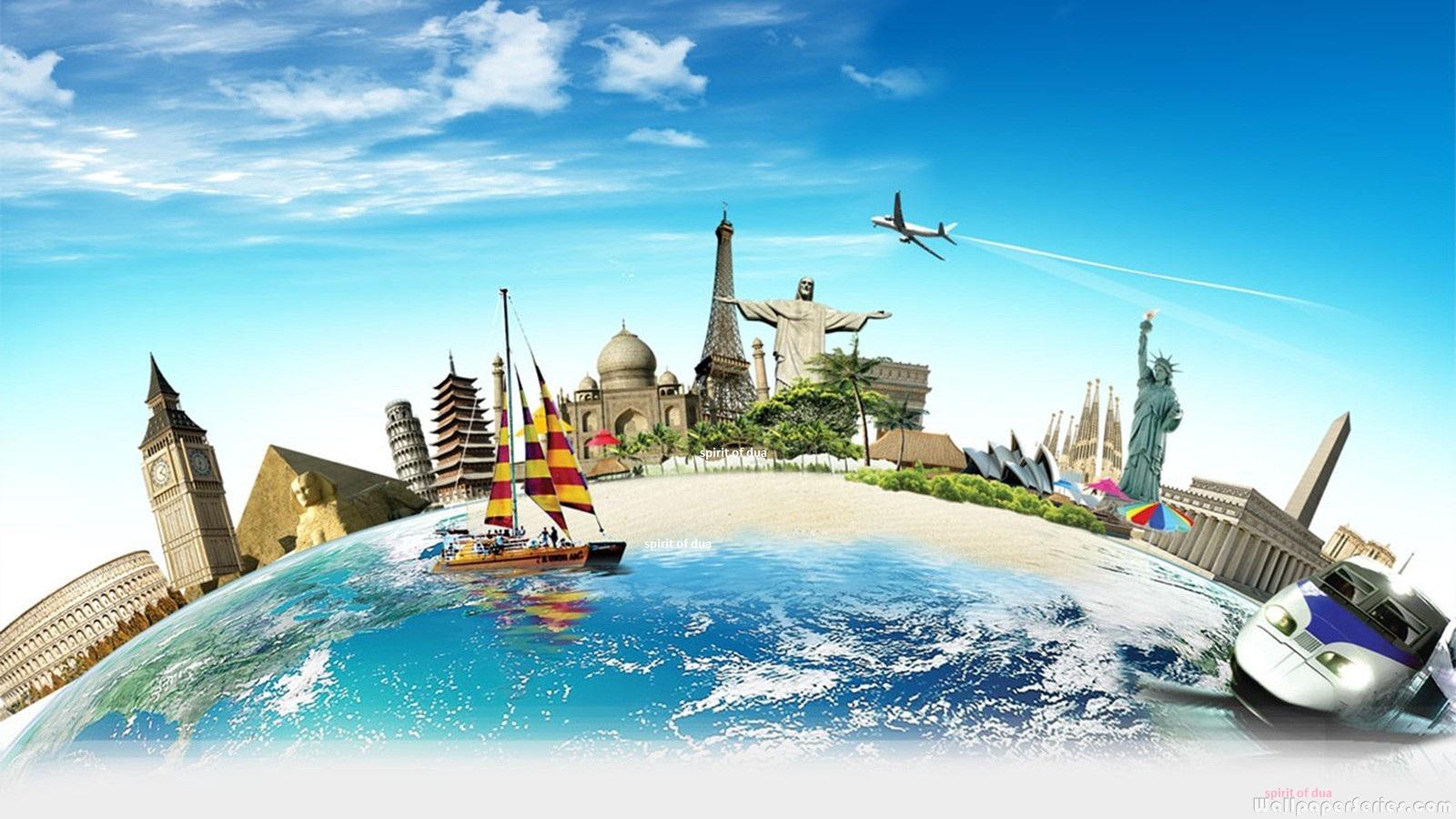Strategic management has become a common phenomenon in today’s manufacturing industries and services sectors. Now, with the increasing globalization effect not only the manufacturing industries but also the services sectors have proved success of strategic management.
What is Strategic Management For Hospitality And Tourism?
Strategic management for the hospitality and tourism industry ultimately involves managerial efforts in establishing and implementing the integrated plans within the total environment of the organization. The objective of strategic leadership is to bring the best management practices to stay on top of the competitions in the industry. Hospitality industry professionals plays an important role in different organizations.
What is Tourism Management?
Tourism is a type of leisure activity that involves traveling to an area for recreation or pleasure. It also involves travel for the purpose of visiting destinations for business through recreational activities such as sightseeing, enjoying local cultures and traditions, attending social gatherings, participating in recreational activities, and so on.
Tourism has become one of the biggest industries in the world’s economy. Tourism industry directly or indirectly becomes a part of the whole society in its operations and effects the economy. It provides jobs and income in a multiplicity of ways and is a large generator of employment and economic growth. It is a source of jobs which is long term in nature and is embedded in the social order.
Tourism essentially is a local activity. The tourism operations, for example, vary from place to place in their economic impact such as revenue earning opportunities, employment possibilities, population increase, infrastructure developments, and so on. This type of development in the tourism industry is entirely dependent on its management, which is at the local level.
Tourism management is the discipline that aims at the management of tourists and tourism activities. Tourism management considers the planning and operations of tourism activities, especially travelers and travel.
Tourism management involves the following:
- Tourism development
- Tourism policy
- Tourism promotion
- Tourism regulation
- Managing work-life balance
The above are some major areas of tourism management.
Tourism development. Tourism management involves the understanding of tourist needs and requirements. This helps to identify the needs of the tourists so as to create opportunities for their economic growth in the tourism industry.
Tourism policy. Tourism policy includes planning, development, and promoting tourism activities at the government level. This is required to implement a uniform policy among the different districts and at the international level. It is also important for establishing cooperative relationships between countries and local authorities. This is required to manage the tourist influx of tourists and to improve the overall destinations.
Tourism promotion. Promoting tourism activities is an important aspect for the tourism industry. There are a number of ways for tourism promotion such as advertising, marketing, selling, and so on.
Tourism regulation. Managing the tourism activities requires regulatory activities to create a balance among the tourism activities and the natural resources at the destination. Also, it protects the cultural and historical features of the destinations. There are a number of instances for tight tourism regulation such as pollution, over crowding, and despoiling.
Work-life balance. Good work-life balance is an important aspect in the tourism management. It involves the compatibility between the work and life patterns. A good work-life balance would enhance the satisfaction among the tourists and satisfaction with the tourism industry.
Tourism product is the main focus of tourism business in the hospitality and tourism sector. The hospitality and tourism industry consists of a number of similar businesses all competing with each other to offer the best quality services and facilities with an attractive price. The hospitality and tourism business has considered the external and internal constraints of the industry. The external constraints are easy to identify as they are the environmental, social, political, economic, and technological constraints. The various internal constraints are government regulations, competition, changing demographics, personal attitudes, and so on.
Now, to manage the tourism product there are two school of thoughts: the product line and generic approach. The generic approach states that the product mix should be the unique selling proposition for the different types of tourism products. This is needed to maintain the stability of the tourism industry even though the demands of the marketplace are changing. Any changes in the product mix are desired to be handled with care. The product line approach states that the products should be grouped together in the same way as in the retail industry. This is appropriate with the multiple product strategy. The product line approach states that the product construction is based on the needs of the circumstances. This is appropriate when the circumstances change.
Another factor that is considered by the management of the product mix is positioning. Positioning is the best way to position the product in the minds of customers. Positioning addresses the questions of who is going to receive the product and why. Positioning places the product in a favorable place. There are two positions from which the product can be positioned in the minds of customers namely the physical and the psychographic positions. The physical positioning identifies the quality of the product and the services that it carries. The psychographic position identifies the personal nature of the product. The customer is given the freedom of choice in both the situations. This is a good example of customer orientation.
How is a Strategic Plan Developed?
There are different methods and ways to develop a strategic plan. Depending on the organizational factors, critical analysis of data are undertaken to provide a proper strategic path. It is also good for the company to have a written strategic plan in order to ensure a good future. A strategic plan involves the following steps:
- Defining the current business circumstances and environment that surrounds the organization
- Developing a vision statement
- Establishing the objectives of the strategic plan for the organization
- Identifying the areas in which the organization should excel in
- Identifying the opportunities as a response to the environment
- Defining how the organization will manage its resources and whether or not they are with the businesses goals
- Establishing the methods and assessments which the organization will follow to measure its progress
Once a strategic plan is developed, it should be communicated to all the stakeholders. Once created, the strategic plan should be reviewed regularly. It is also necessary to review and revise the action plans if needed. Some of the factors that should be considered while creating a strategic plan are the following:
- The organization should know its resources such as its finance, people, and processes
- Knowledge of the organizations strategic direction is the key factor
- Creating and maintaining open lines of communication is a must
- Strategic plan must be sustainable over time
As stated earlier, some of the factors to be considered while creating a strategic plan are the following:
The organization must know the customers and potential customers who are going to make use of its products and services. This is a good way to understand the market to position itself in the minds of the consumers. This is helpful in attracting more customers. This should be done in order to have a clear picture of the organization options and make it flexible and strong.
The organization must know the internal factors such as its skills, knowledge, culture, and people. The knowledge of the internal factors will help the organization to improve its operations and will also help in differentiating the organizations from various others.
The organization must know the external factors. These are those factors that may have the potential to support or harm the organization and its progress. There are a number of factors that may have a negative impact on the organization. These factors such as legislation level, economy of the country, inflation, cultural factors, and so on. The negative factors can be either internal or external.
Other factors that are the strategy for the organization are the business environment, customer patterns, competitor practices, and the consumer needs. The business environment consists of the economic environment such as the high inflation, the economic cycles, political environment and so on. It also consists of the consumer patterns for the industry and the competition features. It is important to check which of these factors is better or worse for the organization. This helps the organization to progress or get stagnant.
It is important for the organization to be competitive and be at par with the organization in the market. The better organization is top notch and will not hesitate to leave the other organizations behind. It should also know its competitors well as competitors can beat it in the world of business. There are different ways to track the competition such as knowing its different phases such as sales and profits, geographical reach, corporate standards, partners, products, and so on. These are the indicators that can help the organization to analyze the competition.
The organization should also know the impact the present environment has on the organization. The organization should know its strengths and weakness and then analyze the 2 factors. The organizations performance in the market should be based on these factors. This is the foundation of the strategies. If the organization knows its strategy, strength and weakness, it will then be able to position itself in the market. If the organization has a keen idea on the changing factors it will be able to plan out its strategies and new level of performance.
Types of Strategic Planning Models
The first model is that of linear planning model. This type of model is effective when the conditions are stable. The model itself consists of long-term, mid-term, and short-term goals. The long term goals are formulated first. The mid term goals are formulated next. The short term goals are formulated later. There is a timeline in the model which shows the order of the plan as well as the events and time span. The second option of planning model is the contingency model. This model is effective when the conditions are changeable. The model itself consists of a long term goal, short term goals, and goals which are formulated to react to the changes. The model is easier to follow. The second type of model is that of PEST analysis. This model is effective when analyzing the changes in the environment. The model itself works on the environment consisting of political, economical, social and technological factors. The environment should have a checklist of scenarios. There is no timeline and no order in the model. The next type of model is the risk matrix model. This type of model is very effective whereby the organization can identify the opportunities and threats in the changing environment. The model itself consists of four dimensions. These are threats, opportunities, people, and strategies. The assessment of the model is made at the end.
Concept of Effective Strategic Planning
There are certain factors that are effective in the strategic planning of organizations. These factors are as follows:
- A clear understanding of the environment in which the organization functions
- A formalized strategic plan for the organization
- The vision of the organization is clear
- The objectives of the strategic plan are aligned with the requirements of the vision
- The support of the strategical plan by the employees and the stakeholders
- The organization has a proper track record of its results
















